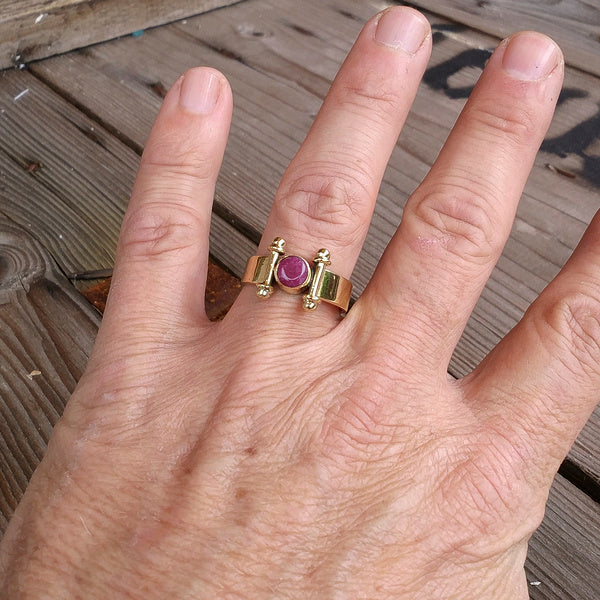VANADINITIS
sexual stimulant for both men and women. It gives concentration and stability, courage and determination
Pb5Cl(VO4)3
MINERALOGICAL CLASS: vanadate
GROUP: dimetric
SYSTEM: hexagonal (6/m)
DRESS: hexagonal prismatic with pinacoidal termination (rarely pyramidal); it is also found in fibrous aggregates with a kidney-shaped surface or coarse masses
HARDNESS: 3 SPECIFIC GRAVITY: 6.8-7.1
REFRACTIVE INDEX: n=2.39 (birefringent)
COLOR: brownish, from yellow, yellow-orange to red; rarely grey
LUSH: from vitreous to adamantine
TRANSPARENCY: translucent, but also transparent
FLAKE: absent
SMEAR: white powder
FRACTURE: conchoidal
GENESIS: it is a mineral that is formed by oxidation of lead minerals, it is therefore found both in metamorphic (contact) and hydrothermal environments (by-product in sulphides)
DEPOSITS: Arizona, Mexico, Namibia, Zambia, South Africa, Argentina, Algeria, Morocco, Australia and in Europe in Carinthia and the Urals
HISTORICAL NOTES: in the past vanadinite was an important mineral as vanadium was extracted only from it (today it is obtained mainly from iron ore); It is currently considered an important collector's mineral due to its shine (also adamantine) and color (the ruby red variety).
OTHER CHARACTERISTICS AND USE: vanadinite is part of a chemical series that includes two other minerals such as Pyromorphite (Pb5(PO4)3Cl) and Mimetite (Pb5(AsO4)3Cl), this series is created by substitution of the anionic groups (PO4), (AsO4) and (VO4). Vanadinite is a mineral from which Vanadium can be extracted, an element used essentially by the steel industry in special alloys, but also used as a catalyst and for the manufacture of colours, varnishes and glass.
COMMENT: crystals can be recognized by their appearance, shine and high density. The mineral dust is under observation as vanadium is an element with suspected toxicity
More from
>
Concentrazione
Coraggio
Determinazione
Stabilità















Leave a comment